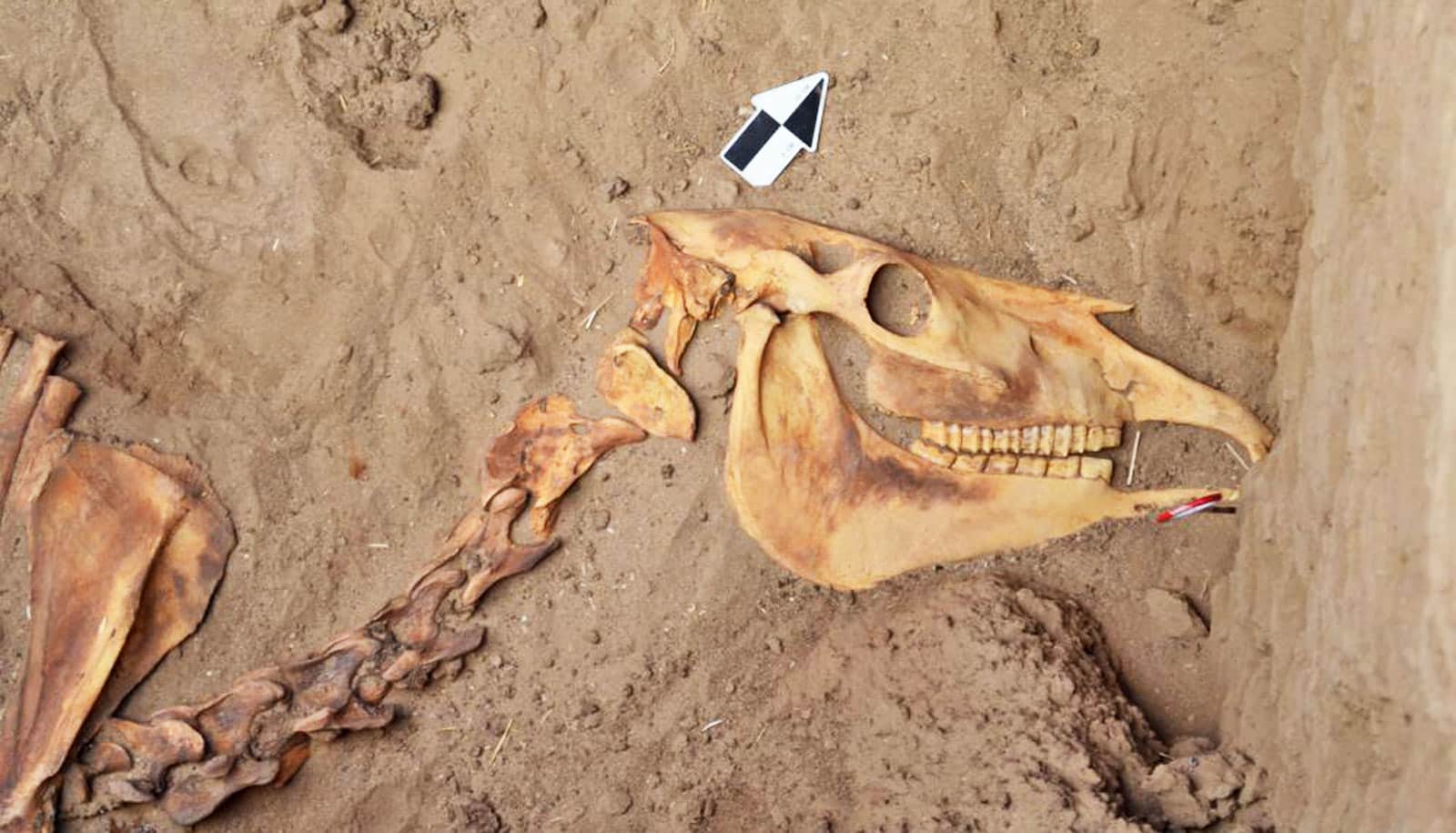The first genome-wide, ancient human DNA data from Sudan reveals new insights into the ancestry and social organization of people who lived more than 1,000 years ago.
In Nature Communications, researchers report their analyses of the DNA of 66 individuals from a site in ancient Nubia known as Kulubnarti, located on the Nile River in Sudan, just south of the Egyptian border, an important genetic and cultural crossroads.
“…dividing people up socially on the basis of their genetic ancestry is a recent phenomenon…”
“Before this work, there were only three ancient genome-wide samples available, from Egypt, for the entire Nile Valley,” says first author Kendra Sirak, who began the project as a PhD student at Emory University. “And yet the region was, and still is, an incredibly important part of the world in terms of the movement, meeting, and mixing of people.”
Sirak was the last graduate student of the late George Armelagos, former professor of anthropology at Emory and a pioneer in bridging the disciplines of archeology and biology. While still a graduate student in the 1960s, Armelagos was part of a team that excavated ancient skeletons from Sudanese Nubia, so the bones would not be lost forever when the Nile was dammed.
“Nubia was a place of human habitation for tens of thousands of years,” says Sirak, who is now a staff scientist at Harvard University. “This ancient genetic data helps fill in some major gaps in our understanding of who these people were.”
Two cemeteries
The 66 individuals date back from 1,080 to 1,320 years ago, during the Christian Period of Sudanese Nubia, prior to the genetic and cultural changes that occurred along with the introduction of Islam. The analyses showed how the Kulubnarti gene pool formed over the course of a least a millennium through multiple waves of admixture, some local and some from distant places. They had ancestry seen today in some populations of Sudan, as well as ancestry that was ultimately West Eurasian in origin and likely introduced into Nubia through Egypt.
“A key finding is that social status did not have a strong relationship to biological relatedness or to ancestry in this ancient population, who lived during a period of cultural and social change,” says Jessica Thompson, a co-senior author of the paper. Thompson, a former PhD supervisor of Sirak in Emory’s anthropology department, is now at Yale University.
The remains of the individuals came from two cemeteries with Christian-style burials that previous evidence indicated were socially stratified. In one cemetery, located on an island in the Nile, the skeletal remains bore more markers of stress, disease, and malnutrition and the average age of those buried was just over 10 years old. By contrast, the average age at death in the other cemetery, located on the mainland, was 18 years.
Ancient DNA
One hypothesis that grew out of this skeletal evidence was that the island cemetery was for a Kulubnarti “underclass,” possibly laborers for members of landowning families buried in the mainland cemetery. It was a mystery whether the social stratification may have developed because one population came from a different origin.
A genome-wide analysis suggests that was not the case—the people buried in the separate cemeteries came from a single genetic population.
“It seems that people in this area did not use biological ancestry as a basis for social differentiation,” Thompson says. “This reinforces the point that dividing people up socially on the basis of their genetic ancestry is a recent phenomenon, with no basis in universal human tendencies.”
Another key finding of the genetic analyses shows that some people as close as second-degree relatives were buried across the cemetery divide. Examples of second-degree relationships include grandparents to grandchildren, aunts and uncles to nieces and nephews, and half siblings.
“That indicates that there was some fluidity among the two groups of people,” Sirak says. “There wasn’t an intergenerational caste system that meant someone was prescribed to being in the same social group as all of their relatives.”
Eurasian-derived ancestry
A further interesting twist is that much of the Eurasian-derived ancestry within the population came from women. “Often when you think of ancestry and how genes move, you think of males who are trading or conquering or spreading religion,” Sirak says. “But the genetic data here reveals that female mobility was really crucial to shaping the gene pool in Kulubnarti.”
One possible explanation is that Kulubnarti was a patrilocal system, meaning that males tended to stay where they were born and females moved away from their homelands.
“The Christian Period Nubians from Kulubnarti are fascinating,” Sirak says. “They survived in a barren, isolated, desolate region where life was never easy. I like to think that the ancient DNA research is giving a new life to these people from 1,000 years ago by providing a more nuanced view of them. Anytime you’re studying someone’s remains, their physical being, you owe it to them to tell the most accurate, respectful, and meaningful story that you can.”
Funded by National Geographic Explorer grants, Sirak is now working with Sudanese colleagues to gather and analyze ancient DNA samples from other geographic locations in the Nile Valley, going even deeper into its past, to add more details to the story of how people moved, mixed, and thrived in the region across millennia.
Coauthors of the paper include researchers from Harvard Medical School, Yale University, the University of Colorado Boulder, the University of Vienna, the University of Coimbra in Portugal, the Howard Hughes Medical Institute, the University of Pompeu Fabra in Barcelona, the University of Georgia, the University of California, Santa Cruz, and the University of Michigan.
Source: Emory University


